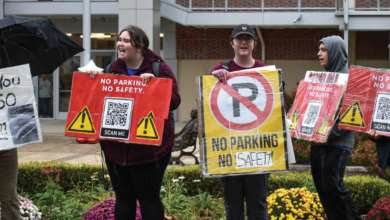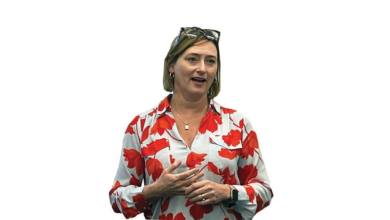SGA pushes for diversity and inclusion for all students
By Sarah Siock
Changes may be coming to the core curriculum across the university, as Rider’s Student Government Association (SGA) explores recommending a diversity and inclusion class be taken by all majors.
While the process is still in the early stages, SGA is preparing a proposal for Rider’s academic policy committees that details a diversity and inclusion requirement for students. Junior political science major and SGA Vice President for Student Affairs Andrew Bernstein said the potential requirement would offer students a new perspective that is currently missing for Rider’s core classes.
What is the requirement?
“It’s kind of shocking that students can go through their entire core curriculum and not take anything that resembles a course on a different perspective…We already know in the United States students start learning these topics way too late. It’s oftentimes saved for college. If we don’t address it in college we’re not preparing students well enough for interacting in a diversifying world,” said Bernstein.
Senior finance major and President of Rider’s Black Student Union Maranisha Rivers agreed that a diversity and inclusion course gives students the opportunity to discuss topics that are traditionally left out of classes. Rivers said current events such as the Black Lives Matters Movement, conversations around critical race theory and LGBTQ issues could all be covered.
Rivers said, “ I think the main focus is to be knowledgeable of all types of students, not just Black students, not just white students, not just Hispanic students. Everyone can come to that class and leave with some piece of knowledge that they can show their peers that they are working with them and not against them… Knowledge is key to solving so many issues.”
SGA has yet to create an official recommendation, but Bernstein began conversations with faculty to discuss logistics. Several New Jersey universities currently have a diversity and inclusion general education requirement. Monmouth University requires all students to take a class in cultural diversity or global understanding, and Princeton University requires their students to enroll in a “culture and difference” course.
‘Make it more effective’
“We’re kind of in the steps of working through how can we do this, because it’s such a hard thing to do, and it’s going to take a while…It’s going to be a long road, but it’s something we’re going to keep pushing,” said Bernstein.
Bernstein envisions that the requirement will be added to a students’ DegreeWorks where they track their academic progress. A tab titled “Diversity and Inclusion” would appear in DegreeWorks under the section with a student’s general education requirement.
“A bunch of courses would fall under that. There is African American history and classes about race, gender and sexuality,” said Bernstein.
Executive Director of the Center for Diversity and Inclusion Pamela Pruitt commended SGA’s efforts and encouraged the organization to utilize courses currently offers.
Pruitt said, “I’m excited and so thrilled that the SGA has taken the initiative to move something like this forward. I think at the end of the day, it’s going to educate not only the students, but it will also help all professors…They should take every force that we have because the professors that teach these courses are amazing. We have excellent content experts. We don’t have to go out and build something, we can take what we have and make it more effective.”
Bernstein added that the Multicultural Studies program at Rider offers several classes that are be relevant to the requirement. The program was implemented in 1998 at Rider and is currently offered as a minor.
Director of Multicultural Studies Pearlie Peters said the program’s flagship course, MCS 110 Race, Class and Gender in Contemporary American Society, is an introductory class for students that reflects diversity and could fall under this potential requirement.
Peters said, “I think the university needs to stress the importance of our students taking diversity courses… I think that it would broaden the students’ intellectual horizons to look at an individual from multiple perspectives. That will later help them in the job market and in their own lives. We don’t want our students to be one-dimensional. As a society that’s global, and ever-changing, a future worker cannot be one dimensional.”
Challenges ahead
Bernstein recognized the difficulty of adding a course to a students’ degree plan since it could increase the number of credits required to graduate. He said SGA is also exploring recommending faculty to include diversity and inclusion in their syllabi.
Bernstein said, “Whether students are apathetic about this or really gung ho on the one course, that one course isn’t going to be enough to really cover all these bases. What I think might be a more successful approach is how can we encourage faculty to include issues and topics of diversity and inclusion in their syllabus and in their courses?… For example, they’re looking at texts that talk about classism, racism and intersectionality. They’re bringing in a lot of important issues into a class that wouldn’t originally talk about them.”
However, an initiative to fund training on diversity and inclusion is necessary for the syllabi to be effective, according to political science professor and Director of the Global Studies program Frank Rusciano.
“If you’re going to add a diversity perspective, not just a component, but a perspective to the course, you’re going to have to train people to do it. I’m not saying that they don’t know how to do it. I’m just saying that you have to really train people so that it really becomes an integral part of the course,” said Rusciano.
Rusciano emphasized that an effort led by students shows the need for a diversity and inclusion requirement at the university.
He said, “This demand for this requirement did not come from the faculty, it came from the students. The fact is that this is something that the students feel they need. I agree with them, but it was initiated by the students and that indicates that they really feel that this is something missing from their education.”


